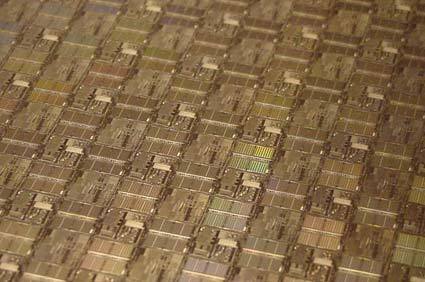TSMC Follows Intel and Invests in 450 mm, EUV Production
ASML cannot complain about a lack of attention these days.
Following a massive investment from Intel amounting to $4.1 billion, foundry TSMC has also agreed to sink money in to the company to accelerate chip manufacturing technology. TSMC invests $339 million into research targeting the development of Extreme Ultraviolet (EUV) and 450 mm lithography tools. TSMC also acquired a 5 percent stake in ASML for $1.03 billion.
Intel previously committed $680 million toward 450 mm development and about $340 million toward EUV. For about $3 billion, Intel received a 15 percent share in ASML.
"We welcome TSMC to our Customer Co-Investment Program. The objective of the Co-Investment program is to secure and accelerate key lithography technologies. These technologies will benefit the entire industry and are not restricted to our Co-Investment partners," said Eric Meurice, Chief Executive Officer of ASML, in a prepared statement.
ASML said it is offering an additional 5 percent stake to willing investors.
The investment program is designed to reduce the individual cost of the development of next-generation manufacturing tools for chip manufacturers. Intel was first to launch the current 300 mm wafer production generation back in 2001 with its Tualatin Pentium III processors.
Contact Us for News Tips, Corrections and Feedback
Get Tom's Hardware's best news and in-depth reviews, straight to your inbox.

Wolfgang Gruener is an experienced professional in digital strategy and content, specializing in web strategy, content architecture, user experience, and applying AI in content operations within the insurtech industry. His previous roles include Director, Digital Strategy and Content Experience at American Eagle, Managing Editor at TG Daily, and contributing to publications like Tom's Guide and Tom's Hardware.
-
alidan larger surface area, more chip yield per waffer, and more profit for close to same production cost,Reply
it makes sense to invest in it. -
fazers_on_stun I guess this means Samsung bailed on a similar 5% offer from ASML. They will have to make up for that when they buy the tools in the future.Reply -
A Bad Day alidanlarger surface area, more chip yield per waffer, and more profit for close to same production cost,it makes sense to invest in it.Reply
Unless if you get too greedy and push for bigger implementation too aggressively. Then there's production issues, and nobody likes those.
